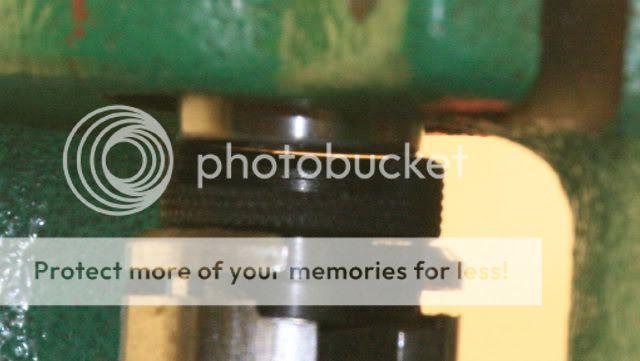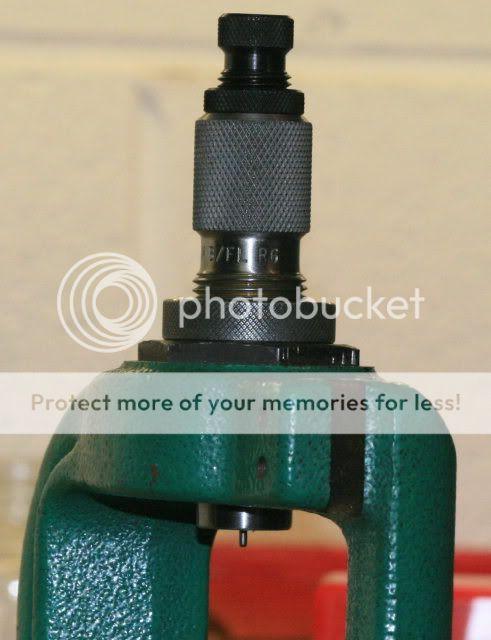AJ Peacock
Well-Known Member
I've noticed several posts recently that were related to setting up a FL (full length) resizing die. I decided to document how I setup a full length die. If I've missed any steps or failed to fully explain something, please let me know and I'll update this post.
Incorrectly setting up a sizing die can result in too much headspace (slop in the chamber) and will usually result in poor accuracy, short brass life and in extreme cases can lead to case head seperation.
If you are setting up a new die, it should be thoroughly cleaned. Automotive brake cleaner works well for this (do this outside, as the fumes are not good for you). Use some Hoppes afterwards and then swab it out as clean as possible.
Here is a die that is dis-assembled and ready for cleaning. Once it's clean, do not reassemble (leave the decapping assembly out of the die).
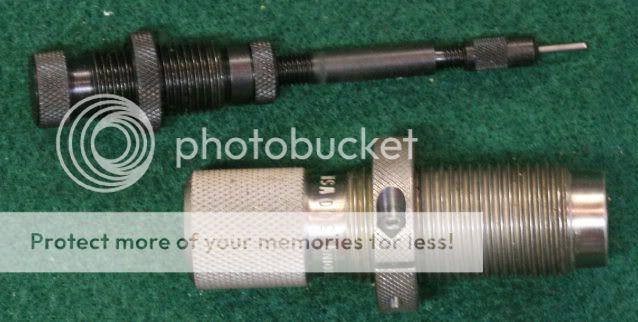
Leave the decaping pin out of the die during the first stage of die setup. We will use the decapping pin to remove the spent primers.
Here I've decapped the spent primer by tapping it out over a small hole in the 2x6 on the bench. It is a good idea to remove the primer prior to measurement, because if the primer protrudes at all below the head of the brass, it will affect your measurements.
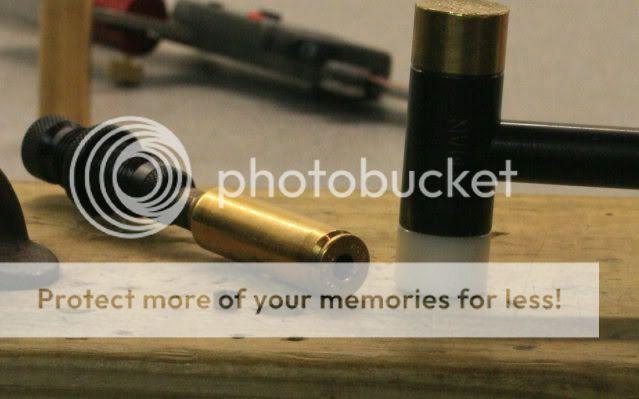
Here is an example of a primer that has flowed back into the firing pin hole. This was caused by a firing pin hole that is too big, not by a load that was too hot.
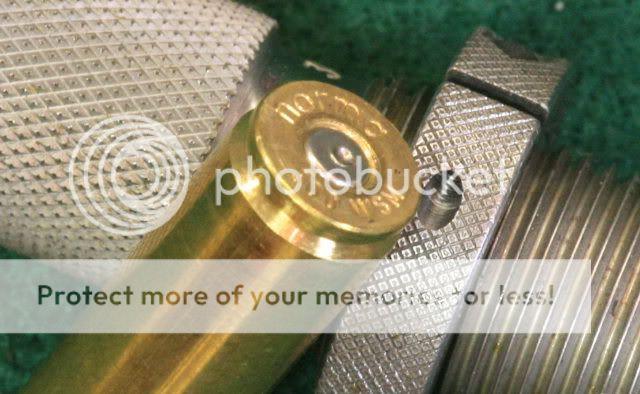
What is needed to correctly setup a die is some method of measuring your brass. I use a Caliper and the Hornady headspace gauges (shown below).
There are other purpose built tools (like the tool from Larry Willis, that does a great job of this as well).
Here I'm measuring a new piece of brass. I zeroed the caliper on the new brass, so we can see how much headspace MY RIFLE has with this batch of new Norma brass.
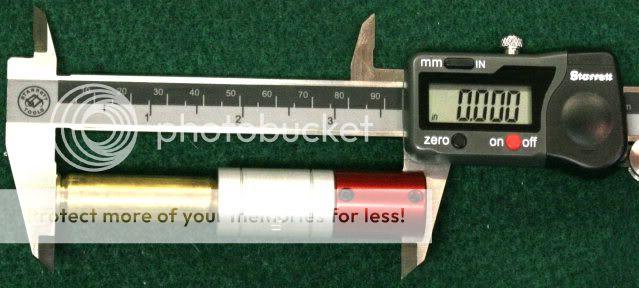
The first step is to find what the once fired length is. You'll want to use once fired brass, since it will have expanded to fit the chamber and then will have 'sprung back' a little.
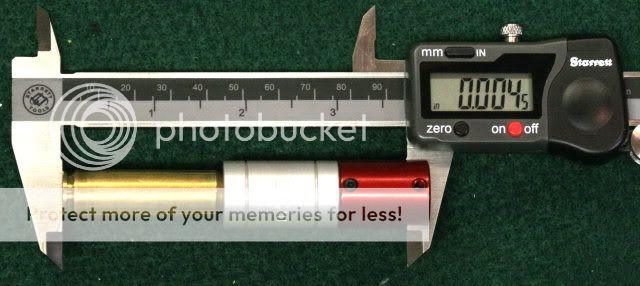
If you use brass that's been reloaded several times, it will not have sprung back and your measurement will be a bit longer. Your measurement will also be subject to how many times the brass has been fired.
Subsequently, I use once fired to eliminate that variable. In this example, the once fired brass measures .0045" longer than the new brass. If my once fired brass will chamber in my rifle without ANY tightness, I will attempt to resize my brass to match this number.
Once fired brass will typically spring back about .001", so matching this number will give me about .001" clearance with all my reloads.
If the Once fired brass feels tight when chambered, then I will subtract .001" from it's measurement and that will be the length I will use when adjusting the die. For this example, I'll set the resizing die to push the shoulder back to .0035" (or as close as I can make it).
After lubricating the once fired brass with some Imperial sizing wax, I resized it with the die about a quarter inch from the shellholder. I measured it and it hadn't moved the shoulder at all. I repeated this step by screwing the die in about 1/10 of a turn at a time until I achieve the 'bump' I am looking for.
Here is the resized brass.
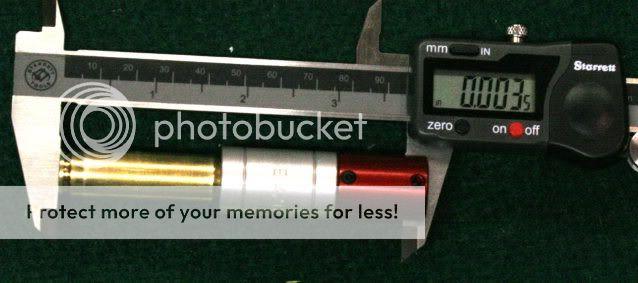
Continued on next post, to get the final 2 images into post. ...
Incorrectly setting up a sizing die can result in too much headspace (slop in the chamber) and will usually result in poor accuracy, short brass life and in extreme cases can lead to case head seperation.
If you are setting up a new die, it should be thoroughly cleaned. Automotive brake cleaner works well for this (do this outside, as the fumes are not good for you). Use some Hoppes afterwards and then swab it out as clean as possible.
Here is a die that is dis-assembled and ready for cleaning. Once it's clean, do not reassemble (leave the decapping assembly out of the die).

Leave the decaping pin out of the die during the first stage of die setup. We will use the decapping pin to remove the spent primers.
Here I've decapped the spent primer by tapping it out over a small hole in the 2x6 on the bench. It is a good idea to remove the primer prior to measurement, because if the primer protrudes at all below the head of the brass, it will affect your measurements.

Here is an example of a primer that has flowed back into the firing pin hole. This was caused by a firing pin hole that is too big, not by a load that was too hot.

What is needed to correctly setup a die is some method of measuring your brass. I use a Caliper and the Hornady headspace gauges (shown below).
There are other purpose built tools (like the tool from Larry Willis, that does a great job of this as well).
Here I'm measuring a new piece of brass. I zeroed the caliper on the new brass, so we can see how much headspace MY RIFLE has with this batch of new Norma brass.

The first step is to find what the once fired length is. You'll want to use once fired brass, since it will have expanded to fit the chamber and then will have 'sprung back' a little.

If you use brass that's been reloaded several times, it will not have sprung back and your measurement will be a bit longer. Your measurement will also be subject to how many times the brass has been fired.
Subsequently, I use once fired to eliminate that variable. In this example, the once fired brass measures .0045" longer than the new brass. If my once fired brass will chamber in my rifle without ANY tightness, I will attempt to resize my brass to match this number.
Once fired brass will typically spring back about .001", so matching this number will give me about .001" clearance with all my reloads.
If the Once fired brass feels tight when chambered, then I will subtract .001" from it's measurement and that will be the length I will use when adjusting the die. For this example, I'll set the resizing die to push the shoulder back to .0035" (or as close as I can make it).
After lubricating the once fired brass with some Imperial sizing wax, I resized it with the die about a quarter inch from the shellholder. I measured it and it hadn't moved the shoulder at all. I repeated this step by screwing the die in about 1/10 of a turn at a time until I achieve the 'bump' I am looking for.
Here is the resized brass.

Continued on next post, to get the final 2 images into post. ...
Last edited:

